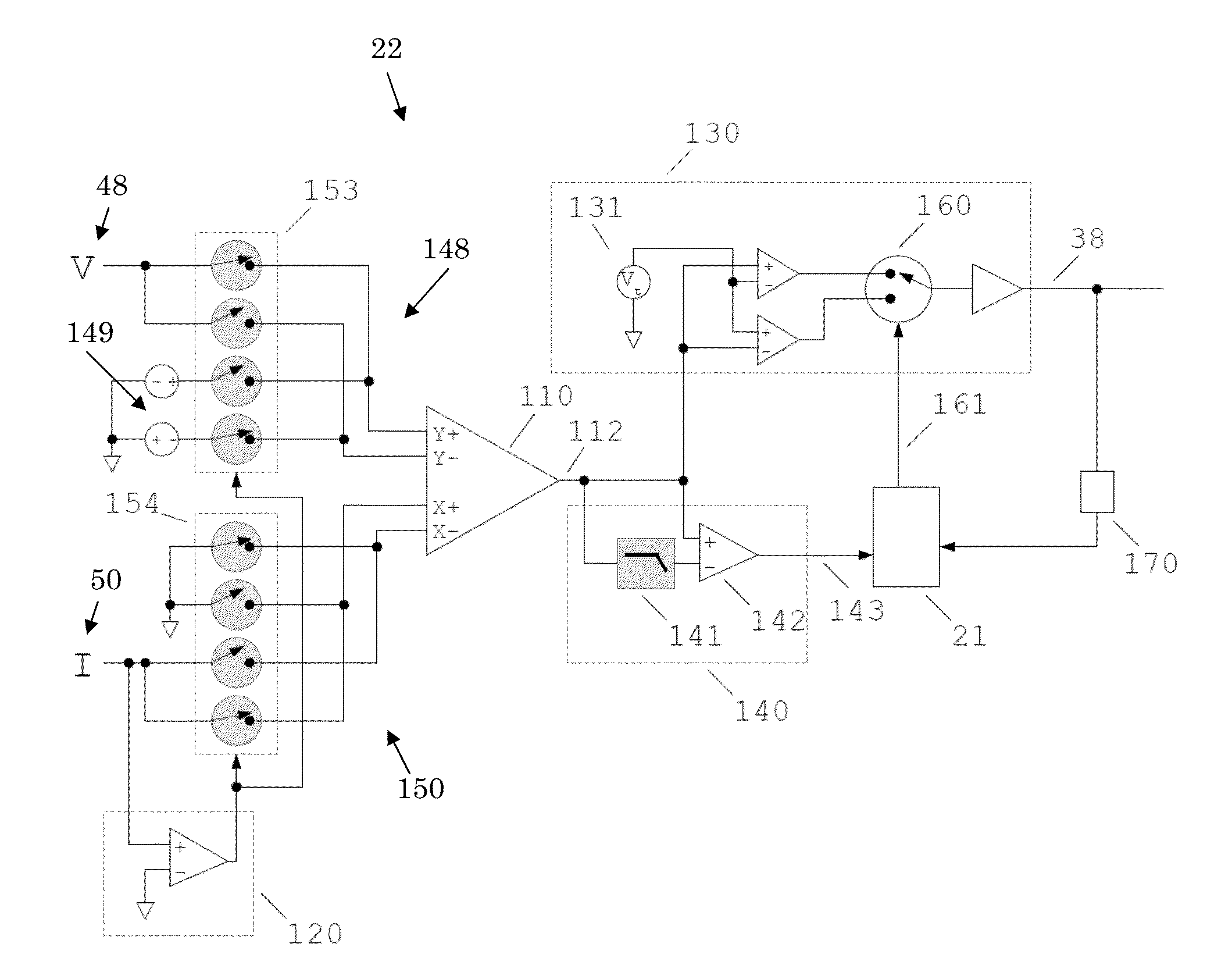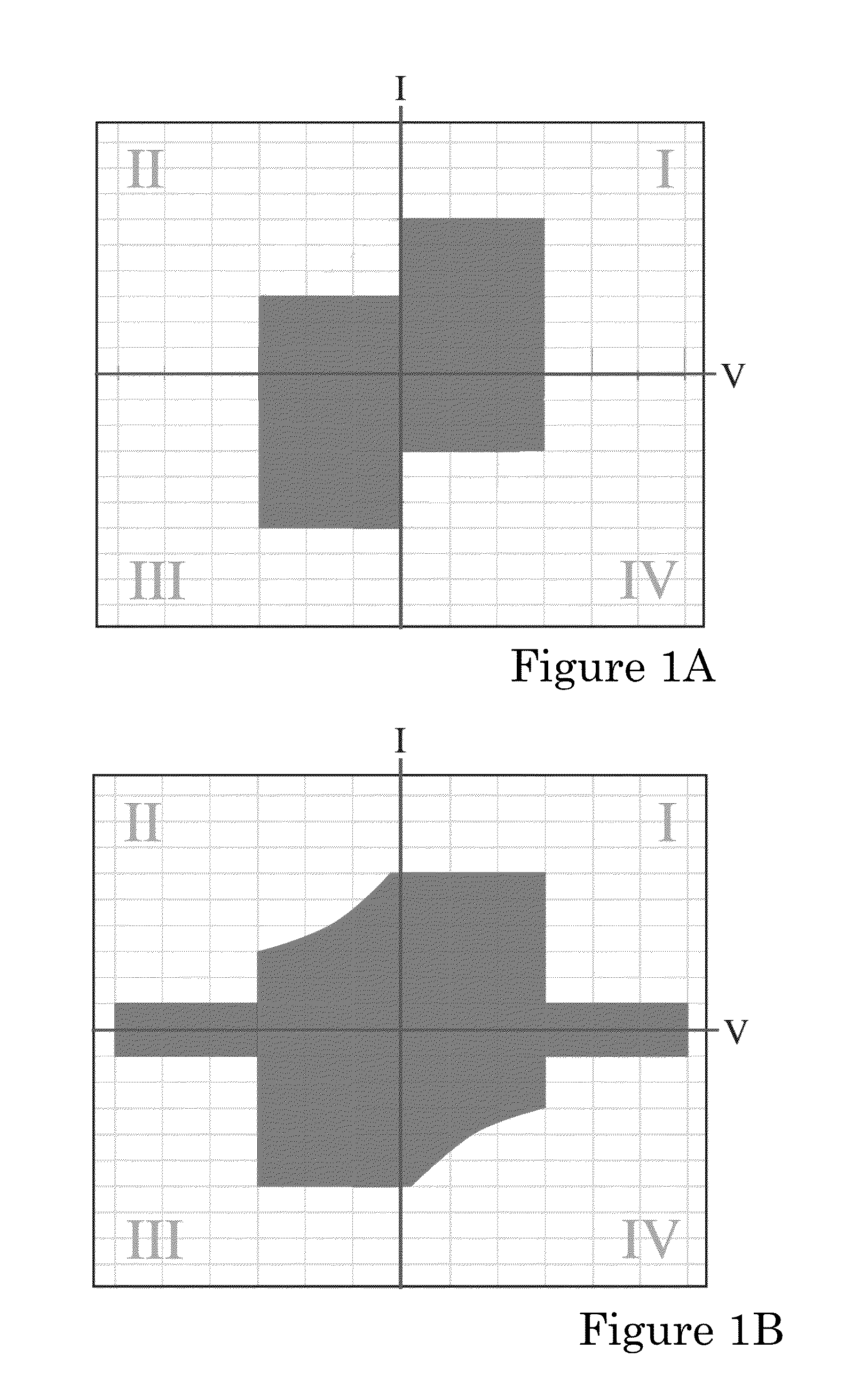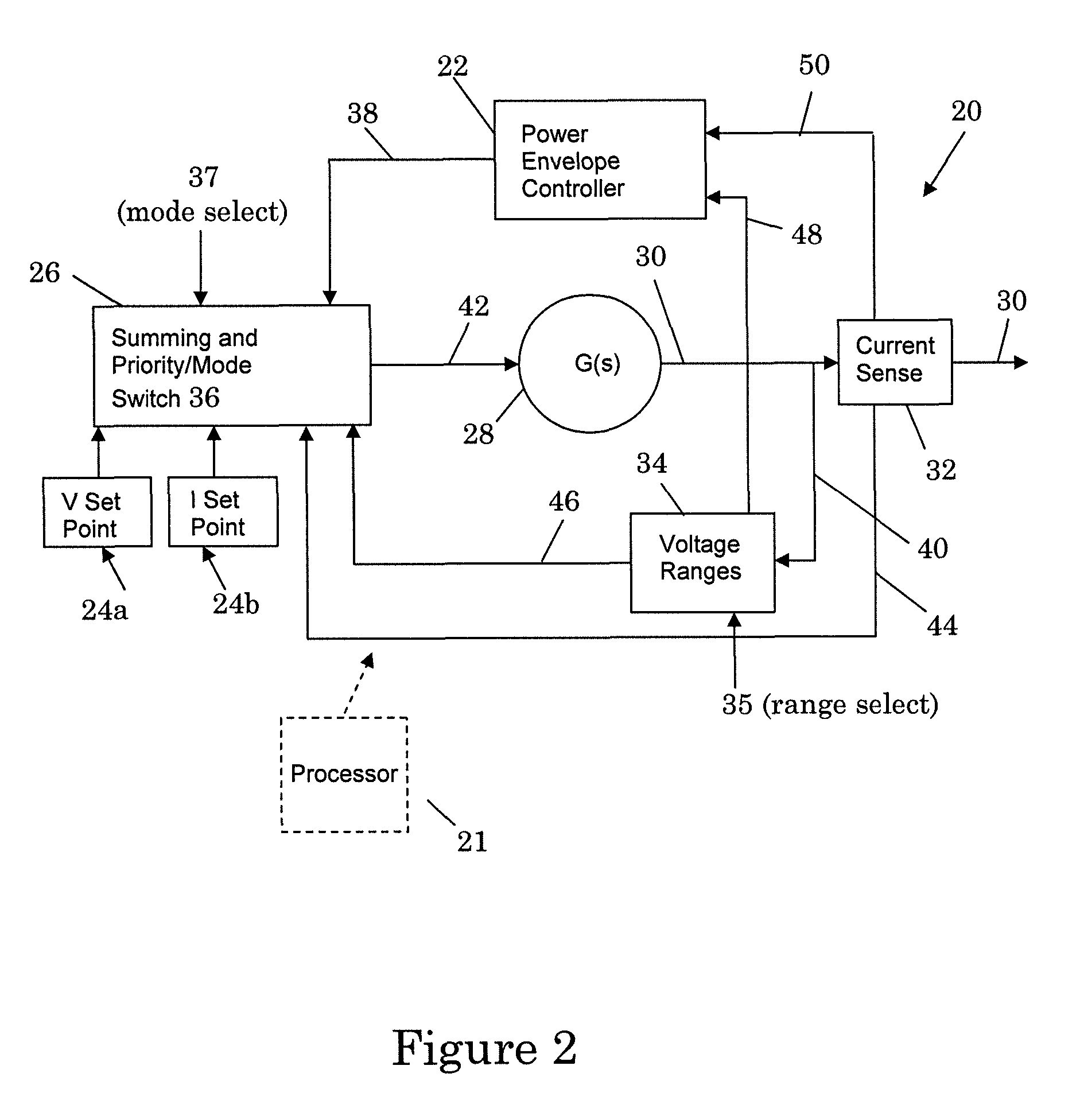Power envelope controller and method
a controller and power envelope technology, applied in the direction of amplifiers with field-effect devices, single-ended push-pull amplifiers, gain control, etc., can solve the problems of over-designed cooling for the majority of users, slow response, and not necessarily robust, so as to reduce the power dissipation
- Summary
- Abstract
- Description
- Claims
- Application Information
AI Technical Summary
Benefits of technology
Problems solved by technology
Method used
Image
Examples
Embodiment Construction
[0013]Disclosed herein is an apparatus and method that provides improved techniques for monitoring the safe operating areas of an SMU in both source and sinkmode operation. Assume an SMU is designed with a sourcemode upper limit of 200 W. Using the 2× sinkmode design criteria, this would require an upper limit of 400 W for sinkmode operation. Such a design would require large heatsinks and elaborate cooling designs. The alternative would be an asymmetric power envelope as shown in FIG. 1A. It should be understood that the SMU may be configured with multiple voltage or current ranges, e.g., ±3000V@20 mA and ±1500V@120 mA. FIG. 1A shows a power envelope where the sinkmode power is limited based on the selected range yielding a stepped shape in quadrants II and IV. This solution leaves the user with an awkward transition at the threshold from source to sink mode and eliminates capability that the user would otherwise benefit from (power within the designed 200 W internal capability).
[0...
PUM
 Login to View More
Login to View More Abstract
Description
Claims
Application Information
 Login to View More
Login to View More - R&D
- Intellectual Property
- Life Sciences
- Materials
- Tech Scout
- Unparalleled Data Quality
- Higher Quality Content
- 60% Fewer Hallucinations
Browse by: Latest US Patents, China's latest patents, Technical Efficacy Thesaurus, Application Domain, Technology Topic, Popular Technical Reports.
© 2025 PatSnap. All rights reserved.Legal|Privacy policy|Modern Slavery Act Transparency Statement|Sitemap|About US| Contact US: help@patsnap.com



